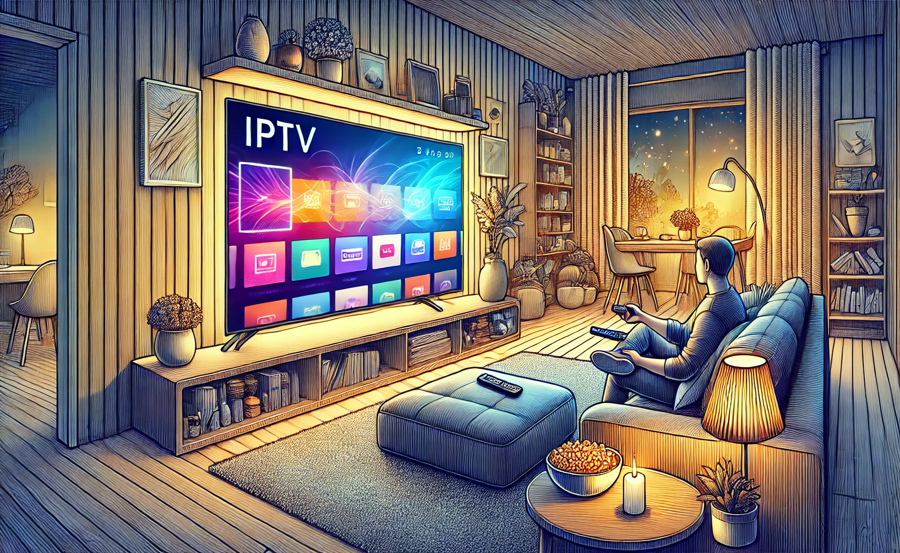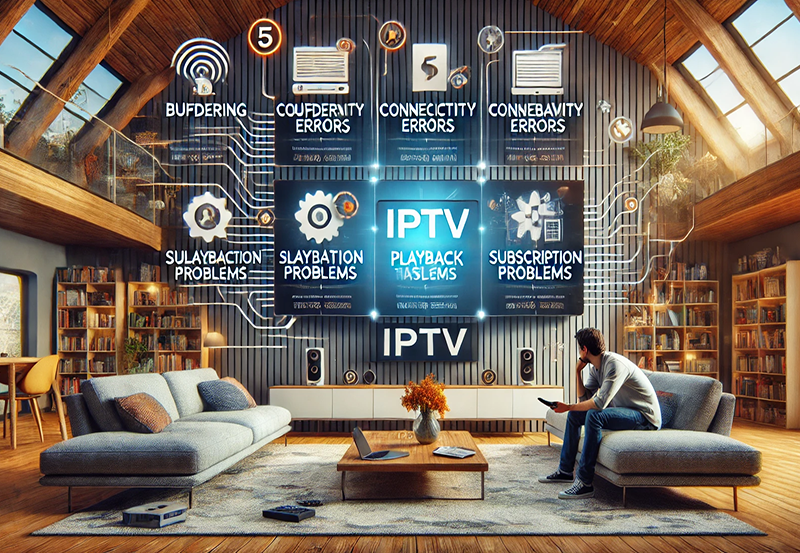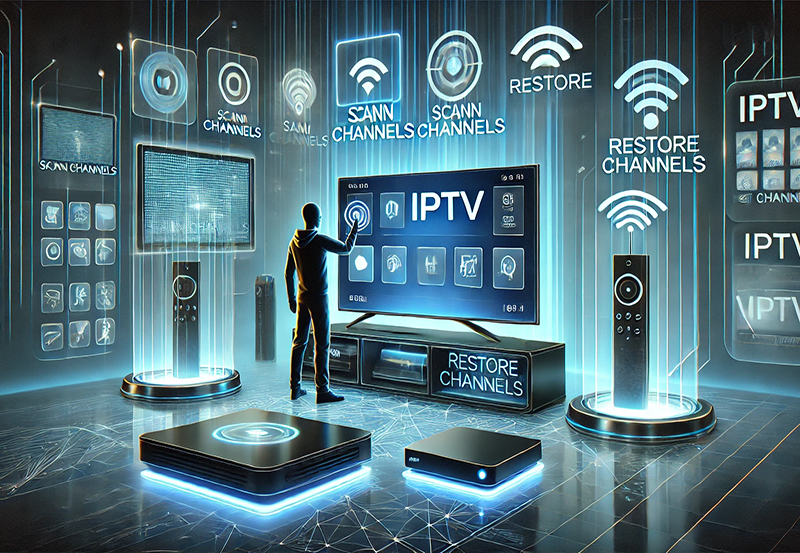In the rapidly evolving world of digital entertainment, IPTV (Internet Protocol Television) stands out as a revolutionary way to access live TV, on-demand content, and more. Unlike traditional cable or satellite services, IPTV uses internet-based protocols to deliver content, providing flexibility, interactivity, and personalized viewing experiences. But how does IPTV work behind the scenes to bring your favorite shows and channels to your screen? Let’s break it down.
What Is IPTV?
IPTV delivers television content over an internet connection, allowing users to stream media directly to their devices. Instead of relying on cable or satellite signals, IPTV uses internet protocols to send data packets to your device, where it is decoded and displayed as video.
Three Main Types of IPTV Services
- Live TV:
- Real-time broadcasting of TV channels, similar to traditional cable services.
- Video on Demand (VOD):
- Access to a library of movies, TV shows, and other content that you can watch anytime.
- Time-Shifted TV:
- Catch-up TV that allows you to watch shows you missed, typically within a specific time window.
How IPTV Works: A Step-by-Step Breakdown
1. Content Acquisition
IPTV providers first acquire the rights to stream content from broadcasters, networks, or media companies. This includes live channels, movies, sports, and on-demand programs.
2. Encoding and Compression
The raw content is encoded and compressed to reduce file size without compromising quality. Technologies like H.264 or H.265 (HEVC) are used to compress videos for efficient streaming, especially in HD and 4K resolutions.
3. Content Storage
For VOD and time-shifted TV, the encoded content is stored on servers. These servers allow users to access the library of content whenever they want.
4. Delivery Protocols
IPTV uses various internet protocols to deliver content:
- HTTP (Hypertext Transfer Protocol):
- Commonly used for VOD services.
- UDP (User Datagram Protocol):
- Ideal for live streaming as it prioritizes speed over error correction.
- RTSP (Real-Time Streaming Protocol):
- Allows real-time control over playback, such as pausing or rewinding.
- MPEG-DASH and HLS (HTTP Live Streaming):
- Adaptive bitrate streaming technologies that adjust video quality based on internet speed.
5. Middleware
Middleware acts as the “brain” of the IPTV system. It handles user interfaces, channel guides, billing, and user accounts, creating a seamless experience for viewers. Middleware platforms also manage user authentication and access control.
6. Content Delivery Network (CDN)
IPTV providers rely on CDNs to distribute content efficiently. CDNs store copies of content on multiple servers located in different regions, reducing latency and ensuring fast delivery.
7. Decoding and Playback
When you select a channel or program:
- Your request is sent to the IPTV provider’s servers.
- The server retrieves the content and streams it to your device.
- Your IPTV app or device decodes the data and displays it on your screen.
Key Components of an IPTV System
1. Head-End
The head-end is where content is prepared for distribution. It includes:
- Encoding systems for compressing video.
- Servers for storing content.
- Management systems for organizing channels and programs.
2. Middleware
Middleware connects the backend with the user interface, enabling features like:
- Electronic Program Guides (EPG): Displays schedules and show details.
- Billing Systems: Handles subscriptions and payments.
- User Management: Tracks viewer accounts and preferences.
3. Distribution Networks
These networks transport content from the head-end to the end-user. They include:
- CDNs: Ensure smooth delivery by caching content close to viewers.
- ISPs: Provide the internet connection for streaming.
4. End-User Devices
IPTV can be accessed on:
- Smart TVs.
- Streaming Devices: Amazon Firestick, Roku, NVIDIA Shield.
- Smartphones and Tablets.
- PCs and Laptops.
- Dedicated IPTV Boxes: MAG, Formuler.
Advantages of IPTV Technology
- On-Demand Access:
- Watch what you want, when you want.
- High-Quality Streaming:
- Supports HD, 4K, and adaptive bitrate streaming.
- Multi-Device Compatibility:
- Access content on various devices.
- Interactive Features:
- Pause, rewind, or fast-forward live TV.
- Cost-Effective:
- More affordable than traditional cable packages.
Challenges in IPTV Delivery
1. Bandwidth Limitations
High-quality streaming requires a stable and fast internet connection. Slow speeds can cause buffering and degraded video quality.
2. Server Overload
If too many users access the service simultaneously, it may lead to server crashes or delays.
3. Geo-Restrictions
Some content is region-locked due to licensing agreements.
4. ISP Throttling
Internet Service Providers may limit bandwidth for IPTV services, impacting performance.
How IPTV Providers Overcome Challenges
- Adaptive Bitrate Streaming:
- Adjusts video quality based on the user’s internet speed.
- Load Balancing:
- Distributes traffic across multiple servers to prevent overload.
- VPN Compatibility:
- Allows users to bypass geo-restrictions and ISP throttling.
- Regular Updates:
- Providers continuously improve their infrastructure for better performance.
The Future of IPTV
As internet speeds improve and 5G becomes more widespread, IPTV is expected to become even more popular. Emerging trends include:
- Interactive Streaming:
- Viewers can customize their channels or playlists.
- AI-Powered Recommendations:
- Personalized content suggestions based on viewing habits.
- Cloud DVR:
- Record and store content directly on the cloud for future viewing.
Conclusion
IPTV revolutionizes the way we consume entertainment by offering a flexible, on-demand alternative to traditional TV services. Understanding the technology behind IPTV gives you a greater appreciation of how seamlessly it brings your favorite content to your screen. With advancements in streaming protocols, CDNs, and user-centric features, IPTV is poised to remain at the forefront of digital entertainment.
How to Resolve Playback Errors on IPTV





